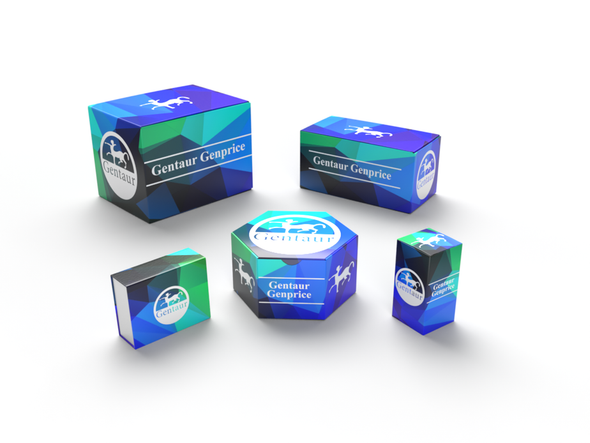740
Mouse Ceramide glucosyltransferase (UGCG) ELISA Kit | AE12278MO
- SKU:
- 740-AE12278MO
- Availability:
- Usually ships in 5 working days
Description
Mouse Ceramide glucosyltransferase (UGCG) ELISA Kit | AE12278MO | Gentaur UK, US & Europe Distribution
Species Reactivity: Mouse (Mus musculus)
Abbreviation: UGCG
Alternative Name: GCS; GLCT1; UDP-glucose:N-acylsphingosine D-glucosyltransferase|ceramide glucosyltransferase|glucosylceramide synthase
Application: ELISA
Range: 1.56-100 ng/mL
Sensitivity: 0.53 ng/mL
Intra-Assay: ≤5.9%
Inter-Assay: ≤6.3%
Recovery: 0, 9
Sample Type: Serum, Plasma, Other biological fluids
Detection Method: Sandwich
Analysis Method : Quantitive
Test Principale: This assay employs a two-site sandwich ELISA to quantitate UGCG in samples. An antibody specific for UGCG has been pre-coated onto a microplate. Standards and samples are pipetted into the wells and anyUGCG present is bound by the immobilized antibody. After removing any unbound substances, a biotin-conjugated antibody specific for UGCG is added to the wells. After washing, Streptavidin conjugated Horseradish Peroxidase (HRP) is added to the wells. Following a wash to remove any unbound avidin-enzyme reagent, a substrate solution is added to the wells and color develops in proportion to the amount of UGCG bound in the initial step. The color development is stopped and the intensity of the color is measured.
Product Overview: Glycosphingolipids (GSLs) are a group of membrane components that contain lipid and sugar moieties. They are present in essentially all animal cells and are believed to have important roles in various cellular processes. UDP-glucose ceramide glucosyltransferase (UGCG) catalyzes the first glycosylation step in GSL biosynthesis. The product, glucosylceramide, is the core structure of more than 300 GSLs. Ichikawa et al. cloned a UGCG cDNA by expressing a human melanoma cell cDNA library in a UGCG-deficient cell line and screening for UGCG complementation. The predicted 394-amino acid UGCG protein has a potential signal-anchor sequence and a single transmembrane domain near the N terminus, and very hydrophobic regions close to the C terminus, which may interact with the membrane.
Stability: The stability of ELISA kit is determined by the loss rate of activity. The loss rate of this kit is less than 5% within the expiration date under appropriate storage condition. The loss rate was determined by accelerated thermal degradation test. Keep the kit at 37°C for 4 and 7 days, and compare O.D.values of the kit kept at 37°C with that of at recommended temperature. (referring from China Biological Products Standard, which was calculated by the Arrhenius equation. For ELISA kit, 4 days storage at 37°C can be considered as 6 months at 2 - 8°C, which means 7 days at 37°C equaling 12 months at 2 - 8°C) .






